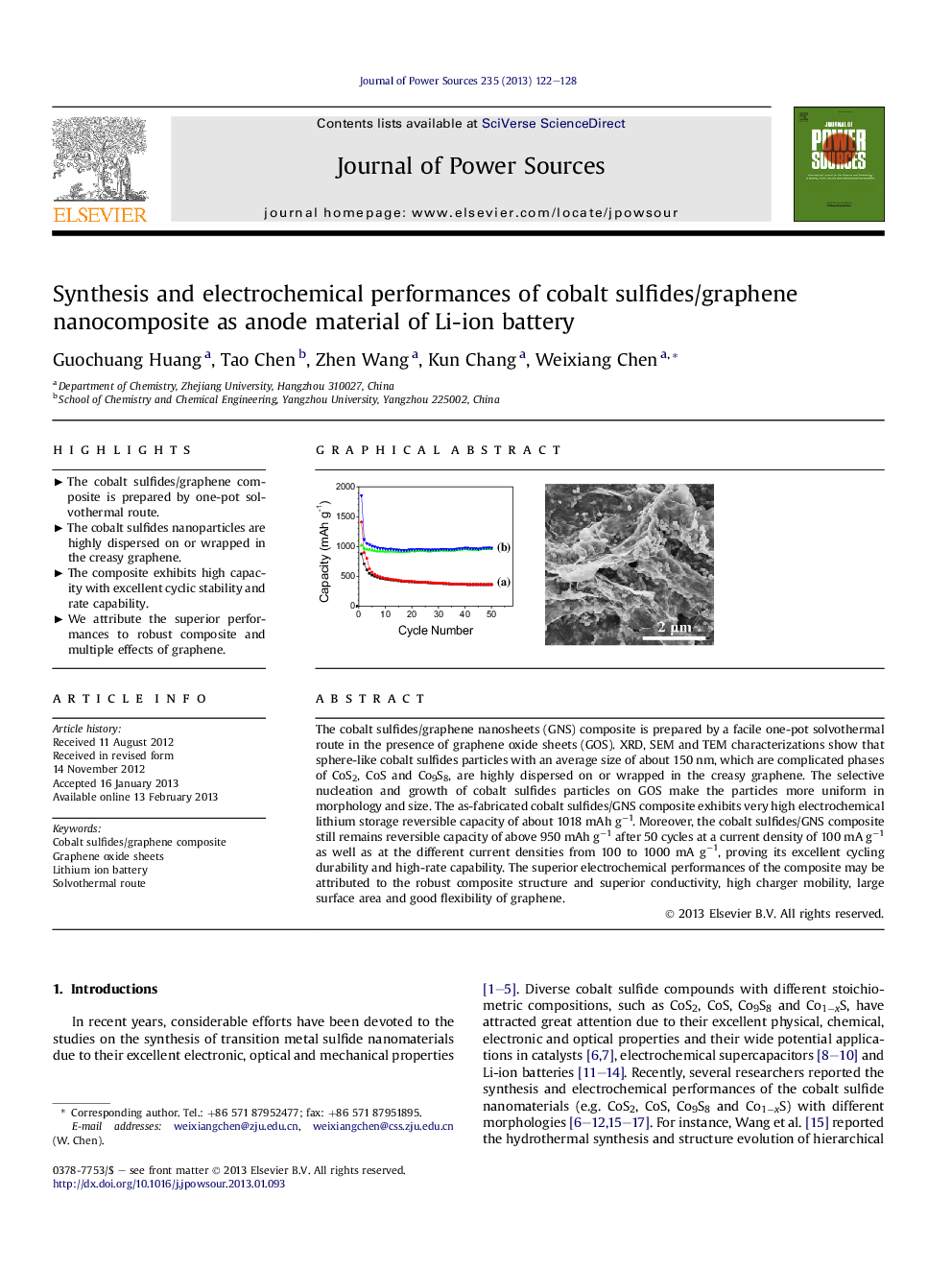| Article ID | Journal | Published Year | Pages | File Type |
|---|---|---|---|---|
| 1287852 | Journal of Power Sources | 2013 | 7 Pages |
The cobalt sulfides/graphene nanosheets (GNS) composite is prepared by a facile one-pot solvothermal route in the presence of graphene oxide sheets (GOS). XRD, SEM and TEM characterizations show that sphere-like cobalt sulfides particles with an average size of about 150 nm, which are complicated phases of CoS2, CoS and Co9S8, are highly dispersed on or wrapped in the creasy graphene. The selective nucleation and growth of cobalt sulfides particles on GOS make the particles more uniform in morphology and size. The as-fabricated cobalt sulfides/GNS composite exhibits very high electrochemical lithium storage reversible capacity of about 1018 mAh g−1. Moreover, the cobalt sulfides/GNS composite still remains reversible capacity of above 950 mAh g−1 after 50 cycles at a current density of 100 mA g−1 as well as at the different current densities from 100 to 1000 mA g−1, proving its excellent cycling durability and high-rate capability. The superior electrochemical performances of the composite may be attributed to the robust composite structure and superior conductivity, high charger mobility, large surface area and good flexibility of graphene.
Graphical abstractThe cobalt sulfides/GNS composite was prepared by one-pot solvothermal route and exhibited high reversible capacity of 1018 mAh g−1 with excellent cycling stability and high-rate capability as anode material of Li-ion battery. The superior electrochemical performance may be attributed to robust composite architecture and multiple effects of graphene.Figure optionsDownload full-size imageDownload as PowerPoint slideHighlights► The cobalt sulfides/graphene composite is prepared by one-pot solvothermal route. ► The cobalt sulfides nanoparticles are highly dispersed on or wrapped in the creasy graphene. ► The composite exhibits high capacity with excellent cyclic stability and rate capability. ► We attribute the superior performances to robust composite and multiple effects of graphene.
